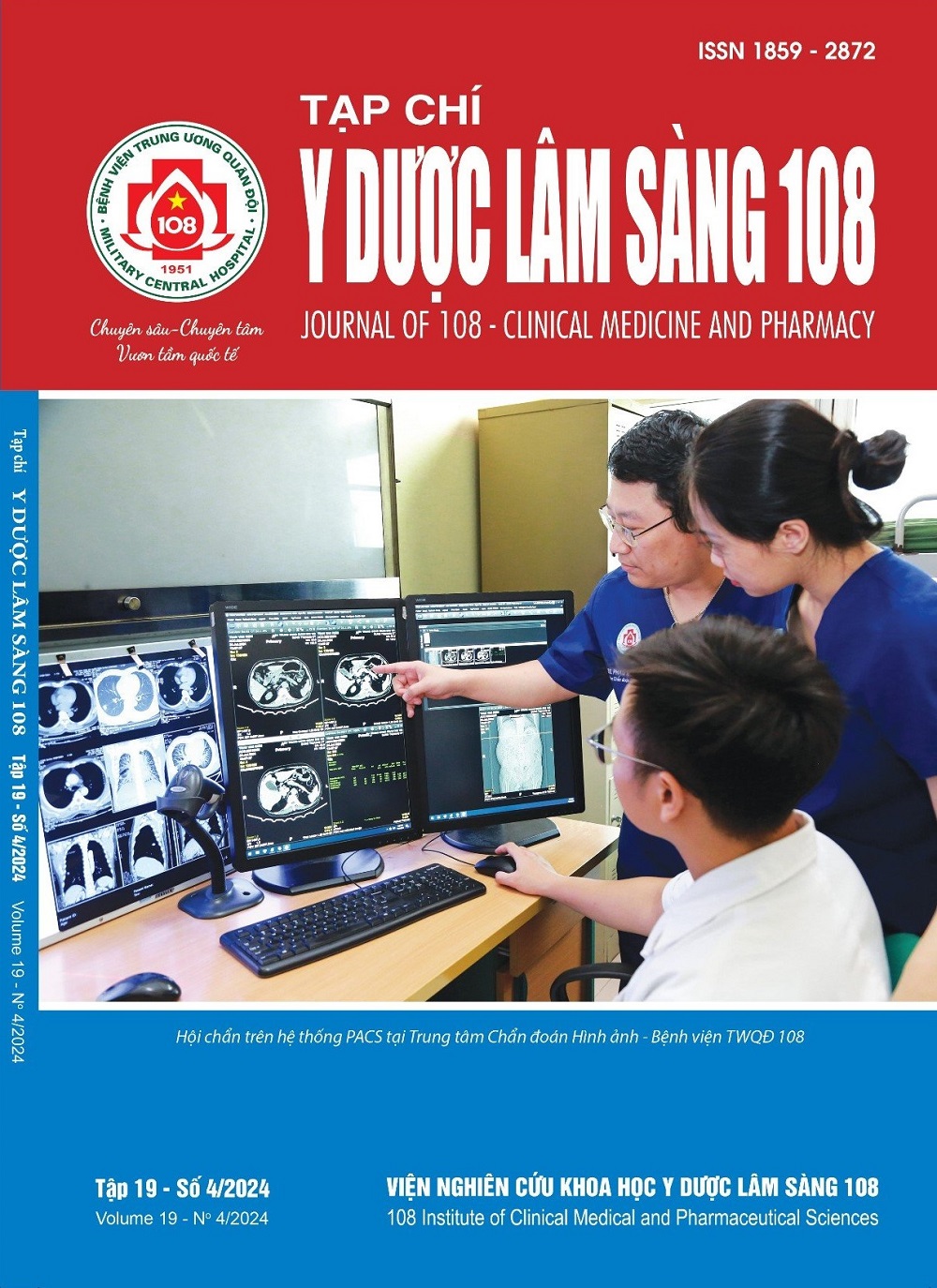Nghiên cứu đặc điểm và các yếu tố liên quan đến tử vong ở bệnh nhân sốc nhiễm khuẩn có giảm bạch cầu
Main Article Content
Keywords
Tóm tắt
Mục tiêu: Đánh giá một số đặc điểm và các yếu tố liên quan đến tử vong ở bệnh nhân sốc nhiễm khuẩn có giảm bạch cầu. Đối tượng và phương pháp: Nghiên cứu hồi cứu, mô tả cắt ngang trên 27 bệnh nhân sốc nhiễm khuẩn có giảm bạch cầu ở thời điểm chẩn đoán, điều trị tại Trung tâm Hồi sức tích cực - Bệnh viện Trung ương Quân đội 108 từ 2021 đến 2022. Chẩn đoán sốc nhiễm khuẩn dựa trên tiêu chuẩn của Sepsis-3 (2016). Thu thập số liệu về đặc điểm về đường vào nhiễm khuẩn, xét nghiệm huyết học, sinh hoá và tử vong tại bệnh viện. Kết quả và kết luận: Tuổi trung bình ở nhóm nghiên cứu là 63,2 tuổi, nam giới chiếm 88,9%, tỉ lệ tử vong (81,5%). Điểm APACHE II, SOFA, SAPS 2 ở nhóm tử vong cao hơn có ý nghĩa so với nhóm sống. Giảm tiểu cầu và giảm nồng độ albumin huyết thanh có liên quan đến tử vong ở bệnh nhân sốc nhiễm khuẩn có giảm bạch cầu.
Article Details
Các tài liệu tham khảo
2. Na SJ, Oh DK, Park S, Lee YJ, Hong SB, Park MH, Ko RE, Lim CM, Jeon K; Korean Sepsis Alliance (KSA) Study Group (2022) Clinical characteristics and outcomes of neutropenic sepsis: A multicenter cohort study. Shock 57(5): 659-665. doi: 10.1097/SHK.0000000000001907.
3. Singer M, Deutschman CS, Seymour CW et al (2016) The third international consensus definitions for sepsis and septic shock (Sepsis-3). JAMA 315(8): 801-810.
4. Assinger A, Schrottmaier WC, Salzmann M, Rayes J (2019) Platelets in sepsis: An update on experimental models and clinical data. Front Immunol 10:1687. doi: 10.3389/fimmu.2019.01687.
5. Claushuis TA, van Vught LA, Scicluna BP et al (2016) Thrombocytopenia is associated with a dysregulated host response in critically ill sepsis patients. Blood 127(24): 3062-3072.
6. Hua Y, Wang R, Yang J et al (2023) Platelet count predicts mortality in patients with sepsis: A retrospective observational study. Medicine (Baltimore) 102(38): 35335.
7. Kim SM, Kim YJ, Kim YJ et al (2022) Prognostic impact of neutropenia in cancer patients with septic shock: A 2009-2017 nationwide cohort study. Cancers (Basel) 14(15).
8. Kochanek M, Schalk E, von Bergwelt-Baildon M et al (2019) Management of sepsis in neutropenic cancer patients: 2018 guidelines from the Infectious diseases working party (AGIHO) and intensive care working party (iCHOP) of the german society of hematology and medical oncology (DGHO). Ann Hematol 98(5): 1051-1069.
9. Kruse JM, Jenning T, Rademacher S et al (2016) Neutropenic sepsis in the ICU: Outcome predictors in a two-phase model and microbiology findings. Crit Care Res Practz: 8137850. doi: 10.1155/2016/8137850.
10. Legrand M, Max A, Peigne V et al (2012) Survival in neutropenic patients with severe sepsis or septic shock. Crit Care Med 40(1): 43-49.
 ISSN: 1859 - 2872
ISSN: 1859 - 2872
